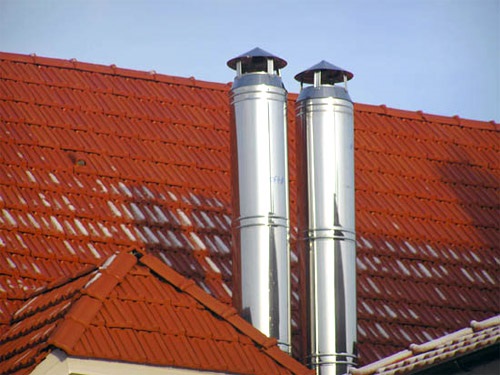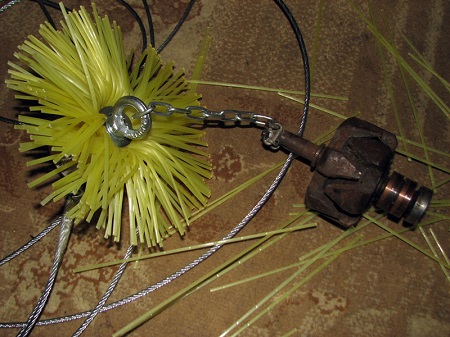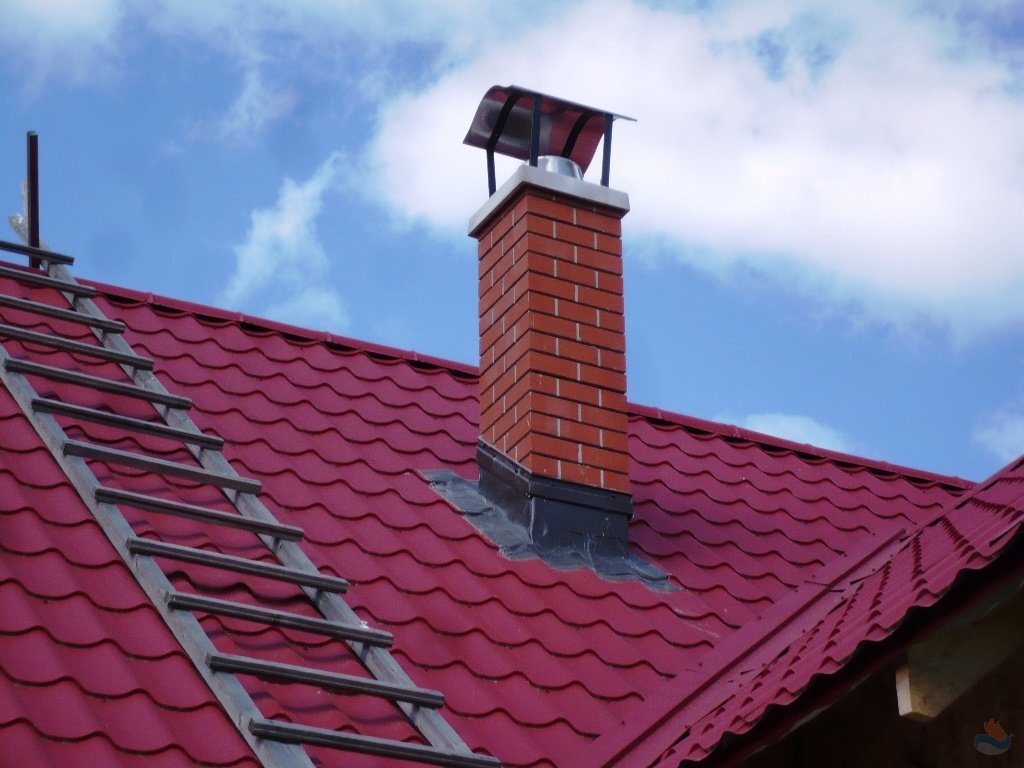It is no secret to anyone that before proceeding with the manufacture of any product, you need to draw up a project. And chimneys are no exception. Designing chimneys is the main topic of this article. As part of today's material, the main parameters and rules for developing a plan for such pipes will be highlighted.
Content
Types of pipes and their specifications

Until recently, brick chimneys were most often used, but progress does not stand still. Thermal devices work more efficiently, and the brick can no longer fulfill all the duties assigned to it. That is why they increasingly prefer modular chimney systems made primarily of steel.
An important feature of a modular chimney is that such a device can be mounted in an existing pipe (that is, you do not have to resort to dismantling) .In addition, modular chimneys can be autonomous and function both inside the building and outside.
Experts unanimously claim that the smokestack has the best characteristics, since it is resistant to corrosive processes, quite durable, and also suitable for any type of heating device. The undoubted advantage is the ease of installation.
Steel chimneys can be single-circuit or double-circuit. The first of them do not require the dismantling of already installed pipes, as they look like liners installed in a brick channel. These liners heat up much faster than brick, and the temperature of the emitted combustion products is higher than the dew point, thereby reducing the formation of condensate. Double-circuit chimneys consist of two types of pipes - external and internal.
Sandwich chimneys (double-circuit) are a double-walled construction, where between the two pipes of different diameters there is a special insulation (hence the name).
The main advantages of such chimneys are obvious to everyone:
- resistance to temperatures up to 600 ° C;
- almost complete absence of condensate;
- resistant to corrosion;
- deposits of soot and burning on the walls are minimal;
- excellent thermal insulation;
- high degree of fire safety.
Such chimneys can be used both in residential buildings and in baths and saunas.
Sandwich pipes consist of two steel cylinders. The outside is made of mirror or brushed stainless steel, while the inside is made of very durable, acid-resistant steel.
Between the cylinders, thermal insulation is usually made of basalt or silicon fibers. Using such a system will help to save fuel consumption due to excellent heat storage.
The design and method of fastening distinguish the following subspecies of chimneys:
- Mast with a maximum height of 28.5 m. Features of their design allow installation at the construction site. An important feature is the speed of installation.
- Self-supporting. They can be used for the removal of gases heated up to 500 ° C with a discharge of up to 1 kPa. Such pipes have a lower mass than competitors. They do not provide for the possibility of independent filtering of harmful fumes and condensate.
- Wall mounted. The design contains the following elements: a gas outlet trunk, a support console, clamps with anchor fasteners and requires the lowest material costs, since it does not need supporting structures and a foundation.
Chimney calculation and design features
All installation work on such structures begins with the design and calculation of the chimney. Creating a project allows you to accurately determine the cost of the structure, as well as provide for the nuances and basic rules for the use of chimneys.
The project reflects various details, elements and parameters of the structure, such as the diameter of the pipes, the type of heating equipment used, the type of insulation of the system, the preferred type of fuel, etc. In addition, the design of the chimney allows you to determine the place of its installation depending on the type of stove and the building as a whole.
When designing chimneys, it is necessary to remember, comply with the approved safety rules, and also take them into account during construction. The requirements for such heating systems are covered in various documents.
Do not forget about the examination of chimneys, which will provide an integrated approach to creating a construction project.
The height of the chimney (the traction force depends on it) is also determined in the calculations based on the power of heating devices and other parameters. Pipe with insufficient height can lead to a decrease in draft, and vice versa, exceeding the optimal length provokes an excessively strong level of draft, as a result of which the fuel quickly burns out and the flame breaks off in the burner.

The calculation of the height of the chimney depends on its location. In order not to make a mistake in the calculations, use the online services designed specifically for this purpose.
The design reflects the structural features of houses, as well as other details that can improve the performance of the chimney, and in addition, will facilitate the examination of pipes in the future.
Chimneys: the rules exploitation
If the chimney is not properly serviced and timely maintenance is not carried out, chimneys can quickly

lose their performance, clog with soot, soot and eventually fail.
In order to avoid such a deplorable situation, the rules for the operation of the chimney were developed, approved by the Gosgortekhnadzor of the Russian Federation on June 5, 2002 No. 3500:
- Before and after the heating season, it is necessary to clean the chimneys, but only with non-working equipment.
- It is necessary to carry out regular structural inspection with the help of qualified specialists. This will allow you to detect problems in time and fix them, as well as provide excellent traction during the heating season.
- Examination involves checking all joints (pipes, sleeves) for wear, which may impede the access of oxygen.
- If cracks in the pipe are detected, it is necessary to eliminate them qualitatively and quickly, since moisture can start to irreversibly destroy the pipe and expand the joints.
- It is necessary to carry out regular preventive cleaning of soot, ash and other combustion products that accumulate during operation.

You can use both mechanical and chemical methods to clean the chimney. The first method involves the use of a ruff, brushes. You have to work hard to clean the smoke ducts. The second is simpler: you just need to periodically add a special reagent to the fuel, and the soot itself will crumble. The choice depends only on your capabilities and wishes.
Chimney calculation: construction cost
As mentioned above, at the design stage, you can approximately calculate the cost of the future design. An accurate calculation of the cost can only be done by a specialist who has been engaged in similar activities for several years.
The price of chimneys comes from certain important factors. One of them is the type of heating device used (gas boiler, boiler with liquid fuel).Depending on the installed chimneys, their installation can be simple, which means the thickness will be minimal or complex, which will increase the cost of the chimney device.
The diameter of the chimney also affects the price. The larger the diameter, the greater the cost of materials, which directly affects the cost of the structure.
The possible manufacture of a chimney with various materials of the outer shell is also worth considering when calculating the cost. The most expensive material now is brushed steel. The most affordable alternative is chimneys with a galvanized steel outer shell.
Do not forget to take into account whether you need to paint the chimney. Based on the type of paint, as well as the amount of work, the cost of this type of service is calculated.
The total length of the chimney and the height of the chimney are very important for a more accurate calculation of the cost of the structure.

When determining the total length, it is necessary to take into account both horizontal and inclined sections of the channel coming out of the heater and ending on the chimney itself.
The calculation of the chimney involves the accounting of shaped elements. It is necessary to calculate the total number of each contoured section.
Designing chimneys and the heating system as a whole, as you have already noticed, is a matter of extraordinary importance. Therefore, in order not to miscalculate, it is better to contact specialized companies for help. Well, if you are confident in your abilities and knowledge, then try to make a plan yourself. This is not so difficult as it seems at first glance, the main thing is not to miss the important details described in this article.


Alas, no comments yet. Be the first!